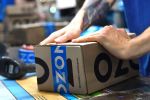20.07.2016, 14:56
ncreasing Interest in Sports, Running, and Hiking Drives Demand for Athletic Footwear
OREANDA-NEWS. Last month, a major landmark in the U.S. athletic footwear market saw the U.S. Senate pass a bill requiring the Pentagon to purchase domestically produced athletic footwear for defense personnel. The bill, passed on June 14, brings athletic footwear under the ambit of the 1941 Berry Amendment, which was passed to protect the American industrial sector during the Second World War and mandated a preference to domestically produced equipment for the armed forces. The 2016 bill was backed strongly by New Balance, a major player in the global athletic footwear market.
The bill also requires the manufacturers to use American materials to produce the shoes, which means multiple ancillary industries are also likely to get a boost. New Balance is likely to land the contract, which will result in significant addition of workers in factories of both New Balance and their suppliers.
The influential role played by Asia Pacific in the global athletic footwear market, illustrated by the dominant 41.6% share it is expected to hold in the global market by 2018, has also had an adverse impact on the North America athletic footwear market. According to Transparency Market Research, the Asia Pacific market for athletic footwear is expected to exhibit the fastest growth rate in the forecast period between 2012 and 2018. Taking this into consideration, this bill could be a timely boost for the stagnated North America athletic footwear market, which has borne the brunt of increasing raw material prices and the market’s maturation in the region’s developed and prosperous economies.
What are the major drivers for the athletic footwear market?
The global market for athletic footwear was valued at US$74 bn in 2011. Exhibiting a 1.80% CAGR from 2012 to 2018, the market is expected to rise to a valuation of US$84.4 bn.
One of the prime drivers for the global athletic footwear market is the increasing interest of the youth demographic in sports due to the increasing global coverage of major sporting events such as the FIFA World Cup, the recently concluded UEFA Euro Championship, the Olympics, and Tennis Grand Slam events. This has made many individuals take up sports as a hobby and fitness solution.
The increasing health-consciousness of the global population, aided by the increasing availability of health and nutrition information, has also helped the global athletic footwear market. Apart from sports, an increasing number of individuals are also becoming interested in running and/or hiking as healthy pastimes. This has also significantly driven the demand for athletic footwear.
The bill also requires the manufacturers to use American materials to produce the shoes, which means multiple ancillary industries are also likely to get a boost. New Balance is likely to land the contract, which will result in significant addition of workers in factories of both New Balance and their suppliers.
The influential role played by Asia Pacific in the global athletic footwear market, illustrated by the dominant 41.6% share it is expected to hold in the global market by 2018, has also had an adverse impact on the North America athletic footwear market. According to Transparency Market Research, the Asia Pacific market for athletic footwear is expected to exhibit the fastest growth rate in the forecast period between 2012 and 2018. Taking this into consideration, this bill could be a timely boost for the stagnated North America athletic footwear market, which has borne the brunt of increasing raw material prices and the market’s maturation in the region’s developed and prosperous economies.
What are the major drivers for the athletic footwear market?
The global market for athletic footwear was valued at US$74 bn in 2011. Exhibiting a 1.80% CAGR from 2012 to 2018, the market is expected to rise to a valuation of US$84.4 bn.
One of the prime drivers for the global athletic footwear market is the increasing interest of the youth demographic in sports due to the increasing global coverage of major sporting events such as the FIFA World Cup, the recently concluded UEFA Euro Championship, the Olympics, and Tennis Grand Slam events. This has made many individuals take up sports as a hobby and fitness solution.
The increasing health-consciousness of the global population, aided by the increasing availability of health and nutrition information, has also helped the global athletic footwear market. Apart from sports, an increasing number of individuals are also becoming interested in running and/or hiking as healthy pastimes. This has also significantly driven the demand for athletic footwear.




Комментарии